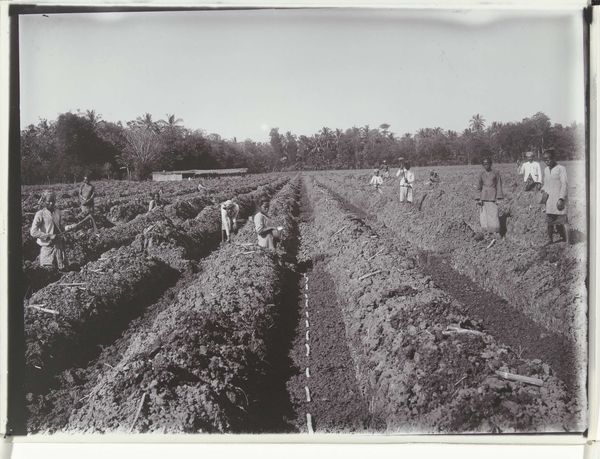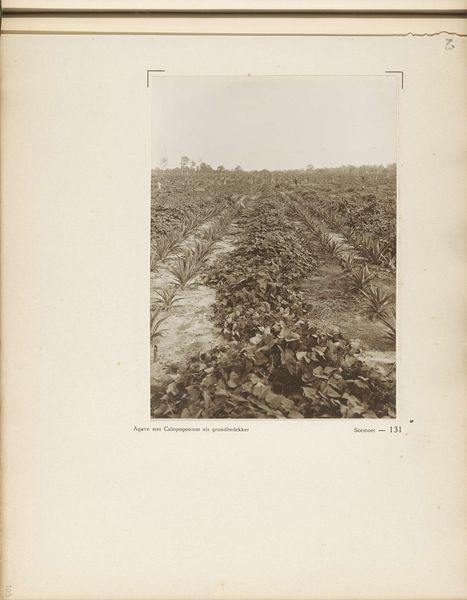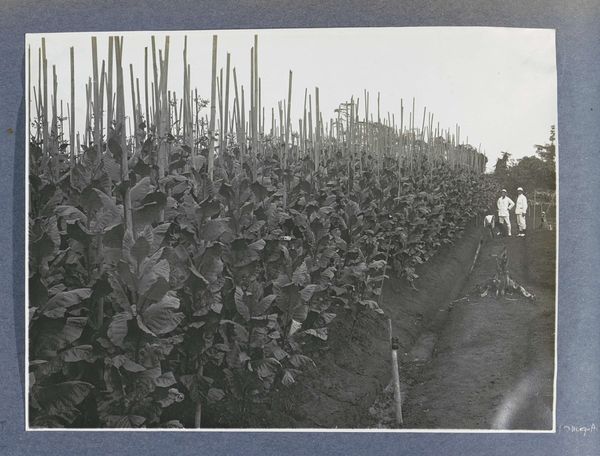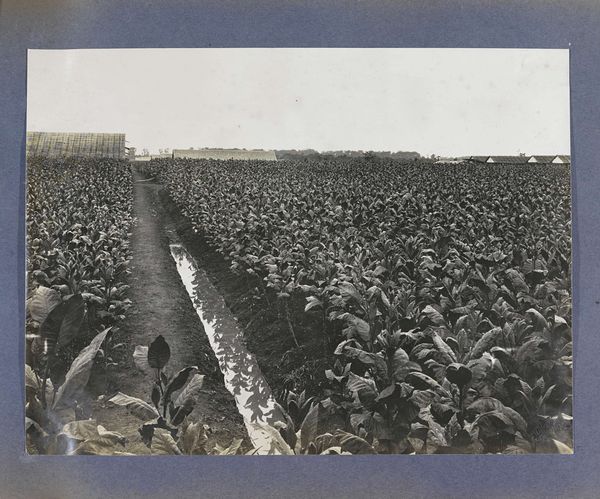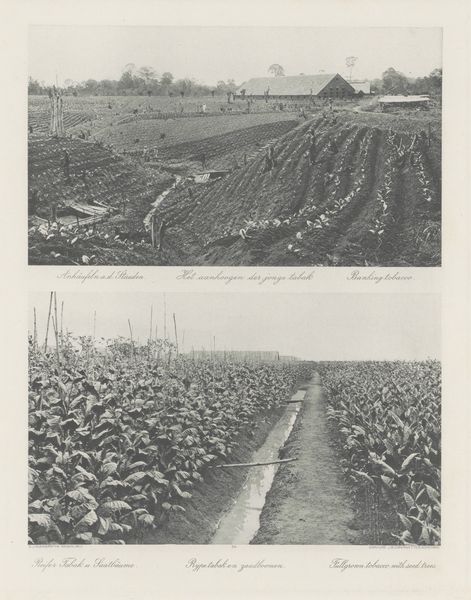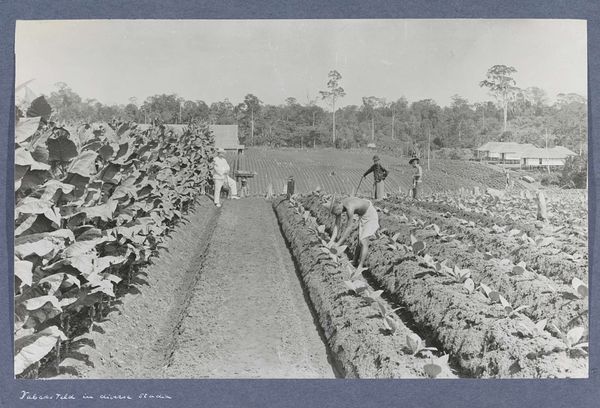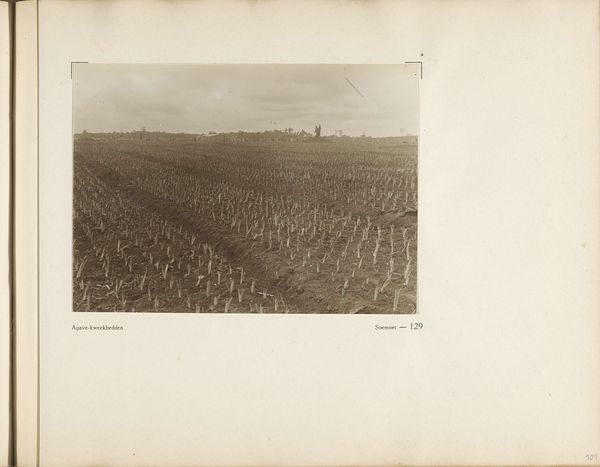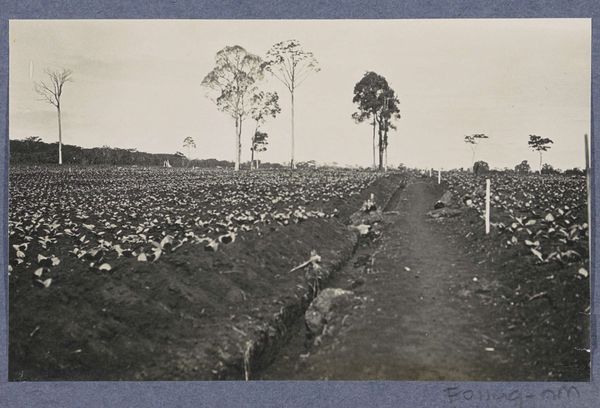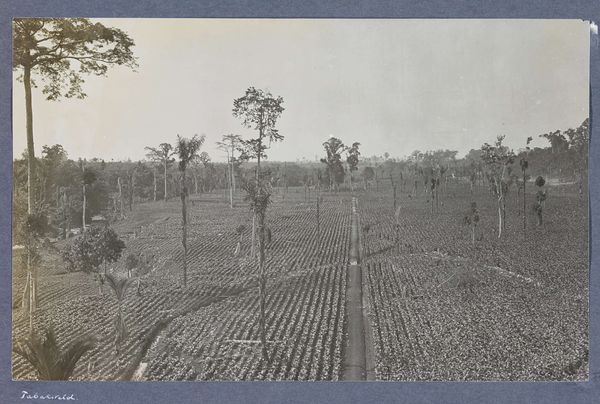
Door storm geteisterde velden van tabaksplantage Boeloe Tjina op Sumatra c. 1900 - 1920
0:00
0:00
anonymous
Rijksmuseum
print, photography
# print
#
landscape
#
photography
#
orientalism
#
remaining negative space
Dimensions: height 150 mm, width 200 mm
Copyright: Rijks Museum: Open Domain
Curator: Looking at this anonymous photograph from circa 1900 to 1920, titled "Door storm geteisterde velden van tabaksplantage Boeloe Tjina op Sumatra," or "Storm-swept fields of the Boeloe Tjina tobacco plantation in Sumatra," I am immediately struck by its bleakness. It's not conventionally beautiful. The horizon is barely visible, and there's a rawness to the landscape. Editor: Raw is exactly the word! This photograph feels like evidence. These storm-swept fields hint at larger socio-economic systems at play during the height of colonial exploitation. It makes me consider questions of power, labor, and land ownership. Curator: Absolutely. We should unpack that context. Sumatra, then part of the Dutch East Indies, was heavily invested in plantation agriculture. This photo likely served a purpose, either documentation for the plantation owners, or perhaps even as a piece of Orientalist propaganda masking labor issues and idealizing agricultural expansion. Editor: It’s fascinating to think about the perspective it represents. Who took this photograph, and for what audience? And to think about whose voices are silenced in the process of making these images. There's the implication of exploitation, a sense of lives dictated by colonial economic imperatives. Did they consent to this representation of their labor? Curator: Precisely. Even in this landscape shot, human absence screams volumes about forced labor and exploitation during the Dutch colonial era in Indonesia. Editor: And what does it mean to view such an image today in the context of postcolonial critique? I am compelled to situate these photographic landscapes as contested terrains of cultural and political narratives. Curator: Agreed. Examining its photographic style, the stark contrast, the strategic framing; these all hint at choices made to portray the scene in a certain way, even seemingly a truthful depiction. And indeed, these decisions influence our perception. The “storm-swept” part makes one think. A romantic idea mixed with the violent imposition. Editor: So, ultimately, the image becomes a powerful catalyst for us to think critically about colonial history, the role of photography in shaping perceptions, and the legacy of plantation economies on present-day landscapes and social structures. It is definitely something to unpack to reveal all those untold stories within. Curator: Definitely! We now see an invitation to reckon with a complicated, colonial past in our contemporary understanding.
Comments
No comments
Be the first to comment and join the conversation on the ultimate creative platform.
